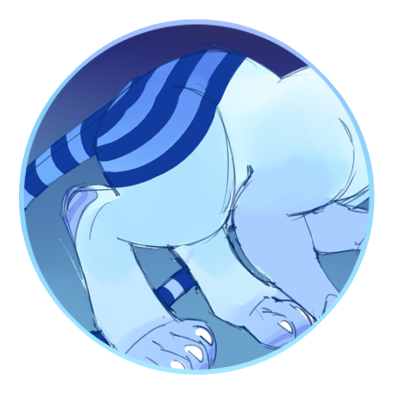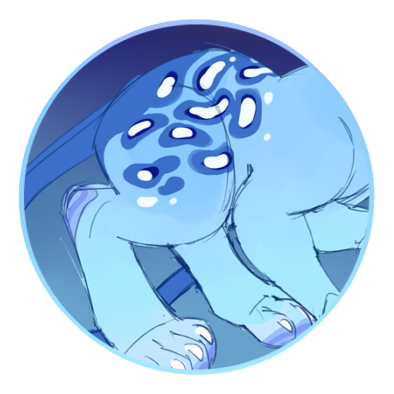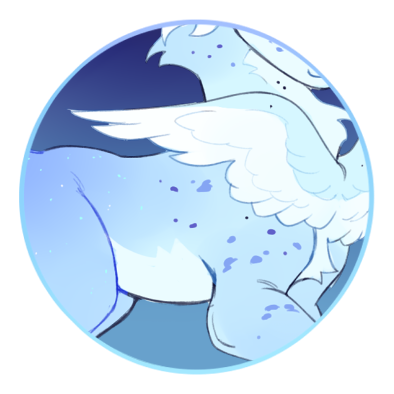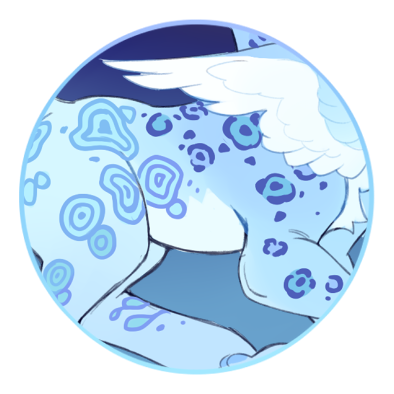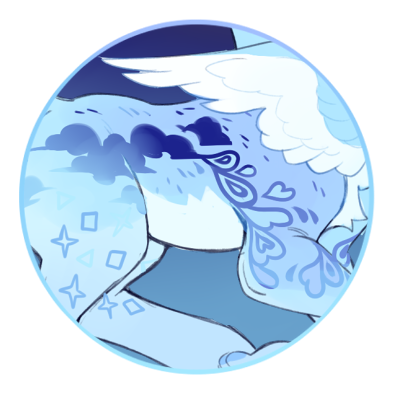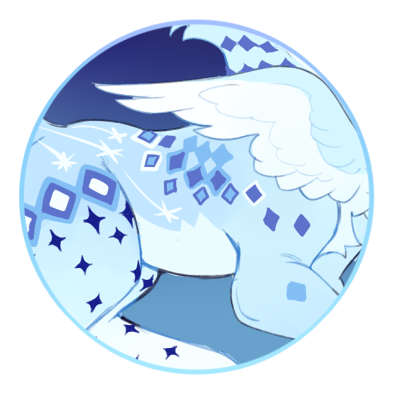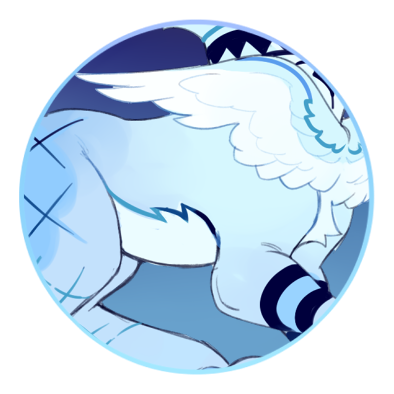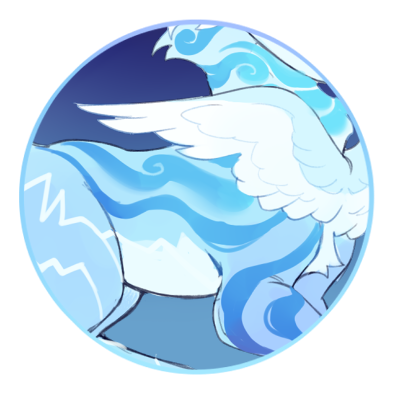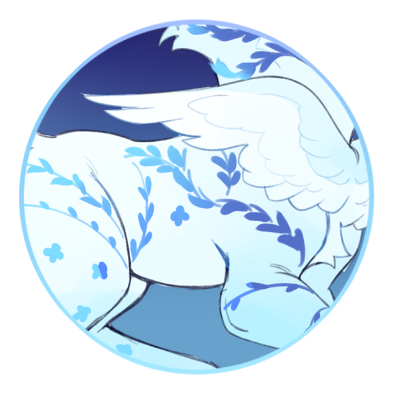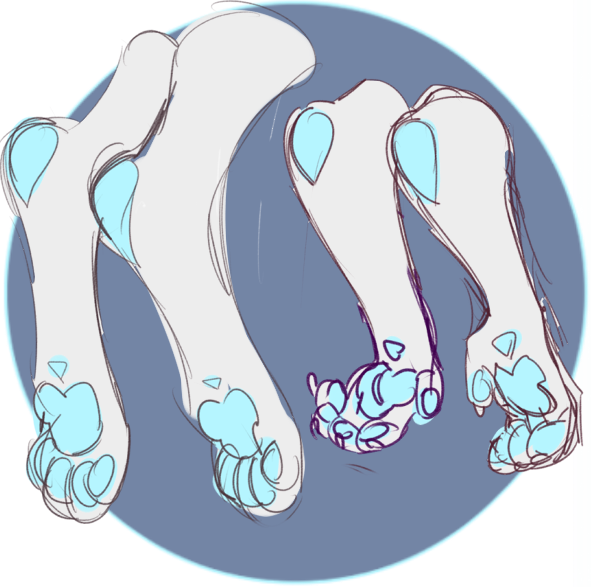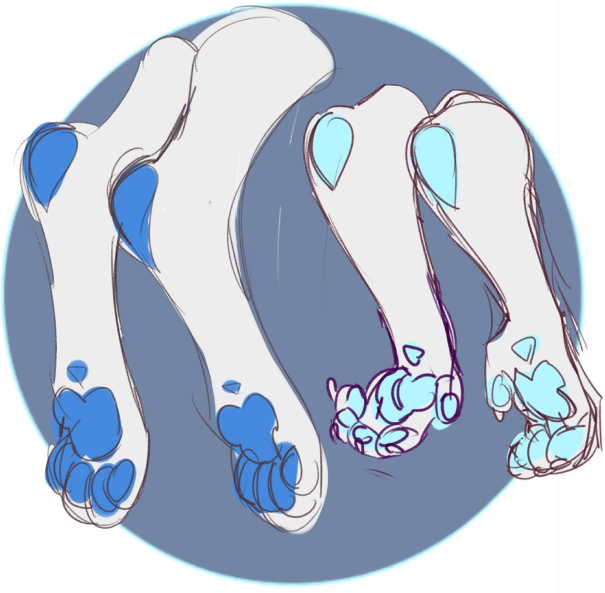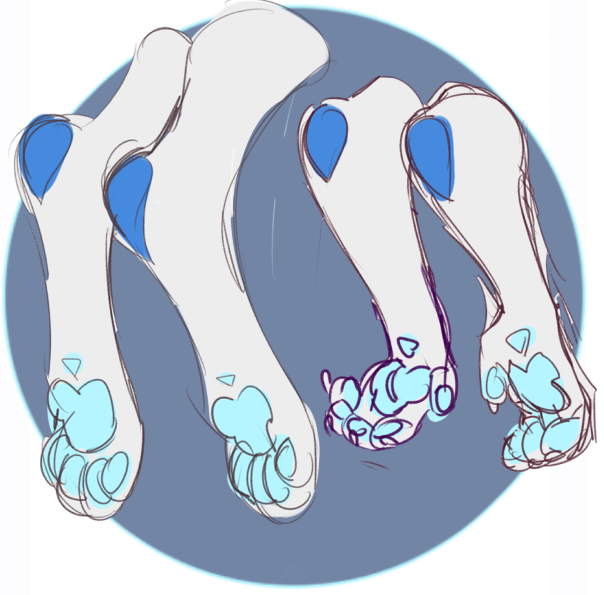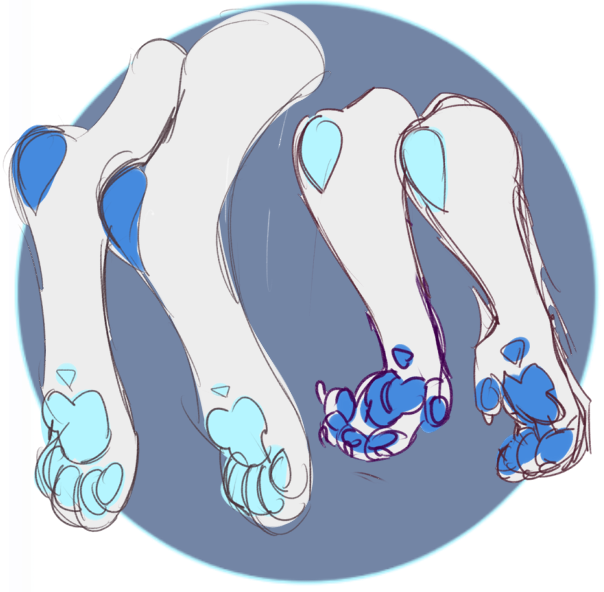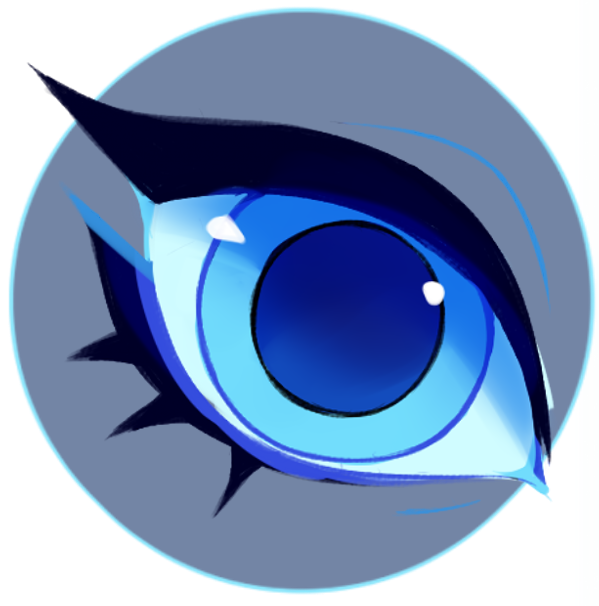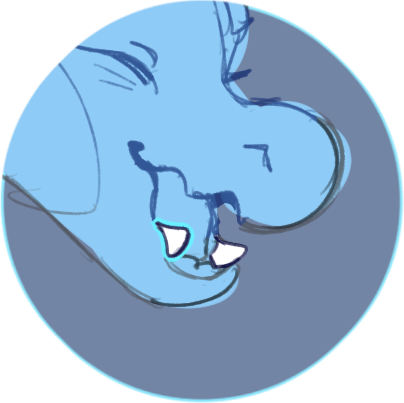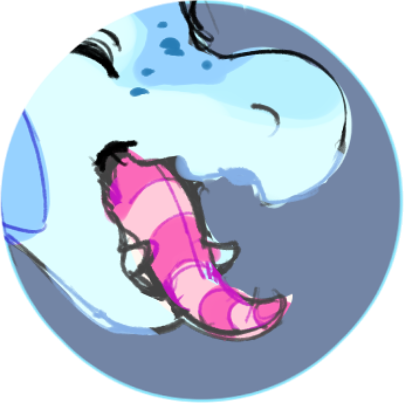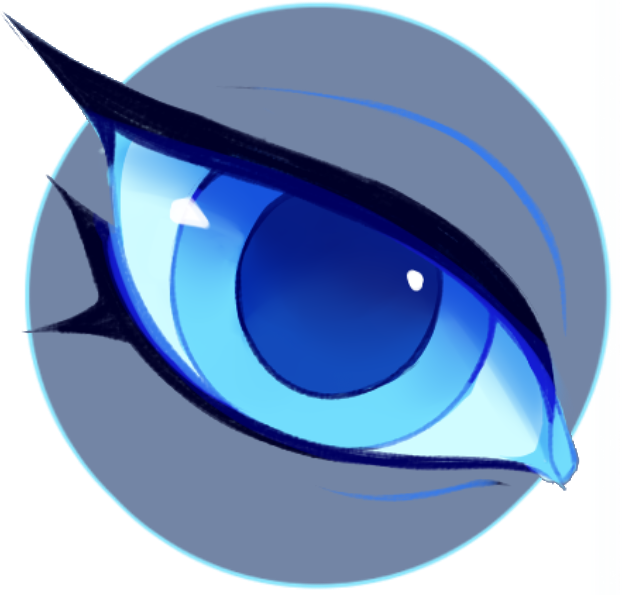Traits
Layered Tailcap (★ Common)
Lelokos are very often seen with what is historically called a "tailcap". A patch or marking that sits on the rump and comes in many varying shapes and sizes. Most Leloko consider it to be their most charming feature.
-
Layered Tailcap:
🔹 A pattern composed of several layers of "scale-like" markings. The scales can be outlined or filled in with any sort of color.
❗ All common markings can be mixed and matched freely and there is no limit to how many and what kind you mix!
❗ Any resemblance to scales should be in markings only and should not appear metallic even if combined with the metallic marking trait.
Banded Tailcap (★ Common)
Lelokos are very often seen with what is historically called a "tailcap". A patch or marking that sits on the rump and comes in many varying shapes and sizes. Most Leloko consider it to be their most charming feature.
-
Banded Tailcap:
🔹 A patch on the rump composed of thick, banded stripes. This tailcap goes very well with the classic striped tail.
❗ All common markings can be mixed and matched freely and there is no limit to how many and what kind you mix!
Scattered Tailcap (★ Common)
Lelokos are very often seen with what is historically called a "tailcap". A patch or marking that sits on the rump and comes in many varying shapes and sizes. Most Leloko consider it to be their most charming feature.
-
Scattered Tailcap:
🔹 A patch on the rump that breaks off into large, scattered shapes. These shapes can be organic or geometric.
❗ All common markings can be mixed and matched freely and there is no limit to how many and what kind you mix!
Spots & Speckles SC (★ Common)
Skullcracker coats come covered in all manner of spots and stripes. Finding sparse or condensed speckles and freckles is very commonplace.
-
Spots & Speckles:
🔹 Tiny speckles, freckling, and scattered spots fall into this category.
❗ All common markings can be mixed and matched freely and there is no limit to how many and what kind you mix!
Closed Spotting SC (★ Common)
Skullcracker coats come covered in all manner of spots and stripes. Any manner of standalone circular spot can be found here!
-
Closed Spotting:
🔹 Any solid round spots fall into this category, including "devilled yolk" and other organic spots found on any other crederian.
❗ All common markings can be mixed and matched freely and there is no limit to how many and what kind you mix!
Open Spotting SC (★ Common)
Skullcracker coats come covered in all manner of spots and stripes. Any manner of standalone and open circular spot can be found here!
-
Open Spotting:
🔹 Rosettes, targets, hypnotic shapes, and any outlined spots would fall into this category.
❗ All common markings can be mixed and matched freely and there is no limit to how many and what kind you mix!
Shaped Spotting SC (★ Common)
Skullcracker coats come covered in all manner of spots and stripes. From clouds to teardrops to ticked lines, these spots are freely able to appear on any skullcracker's coat.
-
Shaped Spotting:
🔹 Clouds, Paisley, Geometric, and the like all fall into this category.
❗ All common markings can be mixed and matched freely and there is no limit to how many and what kind you mix!
❗ Shapes should be relatively simple, and should not look like intricate lacing or other higher rarity markings.
❗ Sun, moon, star, and other celestial shapes are not allowed under this trait.
Diamond Spotting (★ Common)
Skullcracker coats come covered in all manner of spots and stripes. A classic known to encompass much of the skullcracker population is their variety of diamond shaped spots, stitched together in various designs. Diamond coated and diamond armored they're called.
-
Diamond Spotting:
🔹 any open or closed diamond shape, which includes slightly shaped "twinkles"
🔹 Diamonds can be linked together in chain motifs, or be free floating.
❗ All common markings can be mixed and matched freely and there is no limit to how many and what kind you mix!
Rings & Lines SC (★ Common)
Skullcracker coats come covered in all manner of spots and stripes. Rings and lines are commonplace, and often lend themselves to accentuating the spots a skullcracker may sport.
-
Rings & Lines:
🔹 Thick or thin lines and bands can be placed anywhere on the body, with striped tails being one of the most common markings found within the species. These lines can be solid or infrequently broken up.
❗ All common markings can be mixed and matched freely and there is no limit to how many and what kind you mix!
Stripes & Curves SC (★ Common)
Skullcracker coats come covered in all manner of spots and stripes. Curving stripes are commonplace, and can create almost hypnotic patterns on a skullcracker's coat.
-
Stripes & Curves:
🔹 Natural striping, swirls, simple lace, and cloudy outlines all fall into this category. Stripes under this trait tend to be more organic in shape.
❗ All common markings can be mixed and matched freely and there is no limit to how many and what kind you mix!
Trailing Stripes SC (★ Common)
Skullcracker coats come covered in all manner of spots and stripes. From long and winding stripes that lazily cross the coat; to thin, jagged lines that look as though were brought on by a streak of lightning.
-
Trailing Stripes:
🔹 Thin jagged streaks, long coiling stripes, or elongated paint trails are among the allowed markings.
❗ All common markings can be mixed and matched freely and there is no limit to how many and what kind you mix!
Simple Floral Markings SC (★ Common)
Skullcracker coats come covered in all manner of spots and stripes. The blooms found in the sky have always had a special relationship with skullcrackers, and their bodies carry with them the spirit of these blooms. Simple flowers and plant-like markings are very common in most skullcrackers from birth, with those who pursue a stronger relationship with nature gaining more intricate floral patterning.
-
Simple Floral:
🔹 Ivy, wheat, spigs of leaves, and simple flowers are welcome to be used across a skullcracker's coat.
❗ All common markings can be mixed and matched freely and there is no limit to how many and what kind you mix!
Classic Paws (★ Common)
The standard paw type, solid, single color for paws and nubs.
Bi-Color Paws (★ Common)
A standard paw type where the front paws and nubs are a separate color from the back. A vertical split of color. 2 colors max.
Bi-Color Paws v2 (★ Common)
A standard paw type where the paws are a separate color from the nubs. A horizontal color split. 2 colors max.
Bi-Color Swap Paws (★ Common)
A standard paw type where the front paws and back nubs are a separate color from the back paws and front nubs. A diagonal color split. 2 colors max.
Standard Eyes (★ Common)
The standard set of eyes. Can be deep pupil or Pale pupil, and can have an extra iris around the center. The pupil should always be darker than the surrounding iris
Below you can see the types of common eyes and the allowed styling o fthem. Standard eyes do not need to be applied as a trait on the masterlist.

Standard Tusks (★ Common)
The basic bab teeth! Doesn't need to be listed as a trait but here to show the general trait! Below are the opposite end of the tusk spectrum in the common rarity!

Standard Eyes K (★ Common)
The standard set of eyes for Kanti. They come in a few styles but should always match the main conduit color unless you have the mismatched conduit modifier applied to your character.
Standard Eyes consist of:
- A circular or oblong pupil, similar to a goat.
- A pupil darker than the iris. (can be just a bit dark or very dark compared to the iris)
- No rings or embellishments in the iris or pupil.


